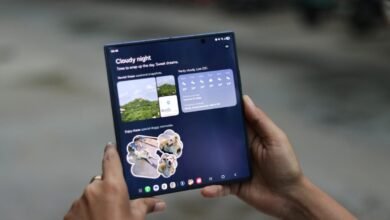The Top AI Image & Video Generator Revealed – See Why It’s So Popular

▼ Summary
– Google Gemini is the most popular AI image generator, used by 74% of surveyed developers and creators for both personal (77%) and enterprise (68%) purposes.
– AI-generated images are more commonly used than AI-generated videos, with personal use being more frequent than enterprise use across both formats.
– Personal users primarily generate AI images and videos for “small, one-off creations,” while preferring AI video for storyboarding and promotional clips.
– Organizations favor AI video generators over image generators for advertising and cite output quality, prompt accuracy, and cost as key factors in their choices.
– People use AI for personal tasks like creating artwork and assisting with homework, while businesses deploy AI agents to automate scheduling and improve productivity.
When it comes to generating images and videos with artificial intelligence, Google Gemini has emerged as the dominant platform according to a recent industry survey. The findings reveal a clear preference for Gemini over competing tools, establishing it as the go-to solution for both individual creators and large organizations. This widespread adoption highlights the platform’s ability to meet diverse creative and professional needs effectively.
A comprehensive survey conducted by Artificial Analysis, which gathered insights from 300 developers and creators, provides a detailed look at current usage patterns. The data shows that a significant 74% of respondents rely on Google Gemini for producing images. OpenAI’s GPT Image follows as the second most popular choice at 64%, with Black Forest Labs’ Flux being used by 37% of those surveyed. This trend extends into corporate environments, where Gemini leads in enterprise image creation with 68% usage, while Google’s Veo is the preferred tool for video generation, favored by 72% of businesses.
The study also sheds light on how people are putting these tools to work. Generating images with AI is noticeably more common than creating videos. For personal projects, 53% of users incorporate AI-generated images into their creative processes, whereas 39% do the same with video content. In a professional context, 44% of organizations integrate AI image creation into their production workflows, and an equal 39% utilize AI for video generation.
The purposes for using these technologies vary considerably. Individuals primarily turn to AI images for quick, one-off projects, with 81% citing this as their main reason. A similar 77% use AI videos for the same spontaneous creations. However, a notable 63% of personal users prefer AI video generators for more complex tasks like storyboarding, applying special effects, and producing short promotional clips, compared to just 52% who use AI images for these applications.
For advertising and marketing, businesses show a stronger inclination toward AI video generators, with 55% leveraging them for campaigns versus 42% who use AI image generators. When deciding which AI models to license across their entire company, organizations prioritize several key factors. The most important driver is the production of higher-quality outputs, a concern for 82% of respondents. This is closely followed by the model’s ability to accurately follow user prompts, which matters to 73% of decision-makers. The total cost of implementation is also a significant consideration for 55% of organizations.
The integration of AI into daily life continues to expand across both personal and professional spheres. People are increasingly using these tools to craft custom artwork, produce promotional videos, and even assist with everyday chores like homework, cooking, and drafting messages. In the corporate world, companies are partnering with tech giants like Google and Microsoft to deploy sophisticated AI agents. These systems boost productivity by automating administrative duties such as scheduling meetings, supporting developer workflows, and generating real-time notes during discussions.
(Source: ZDNET)





